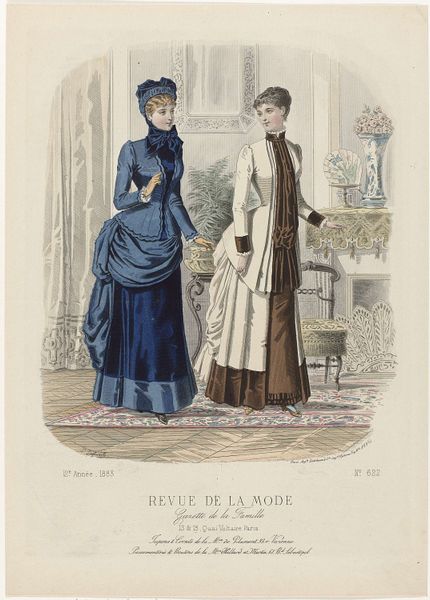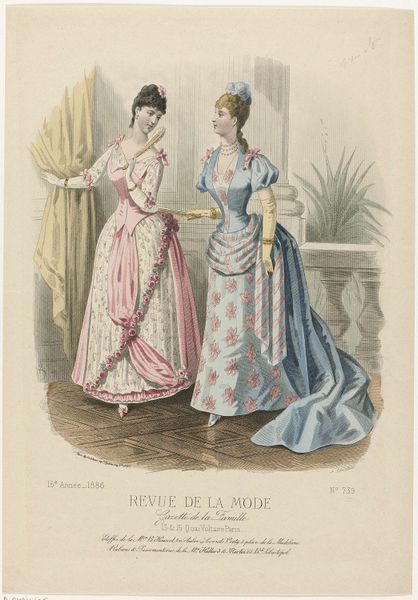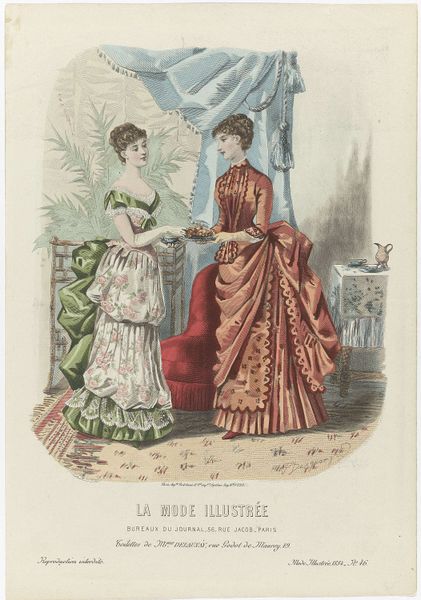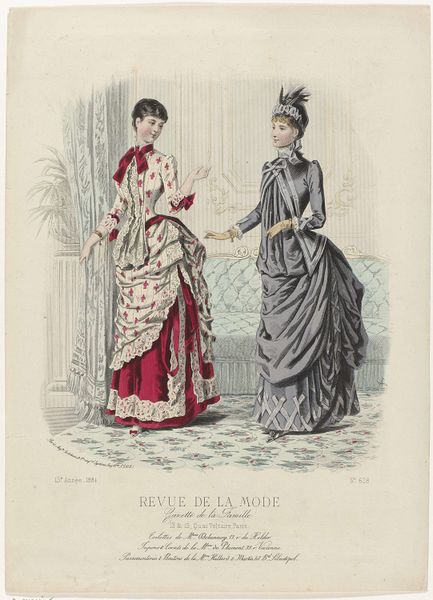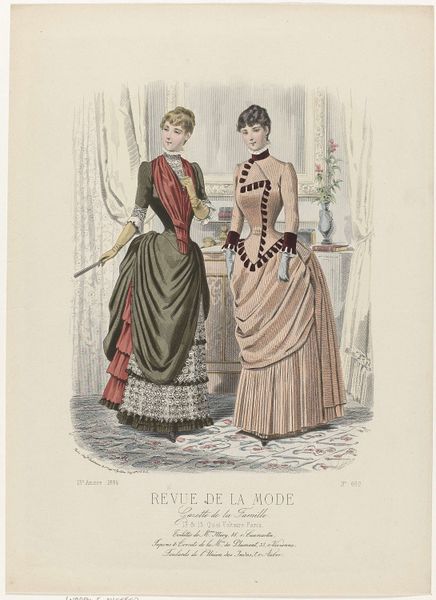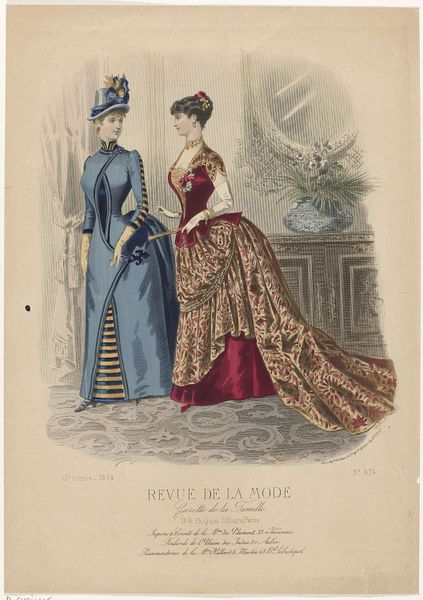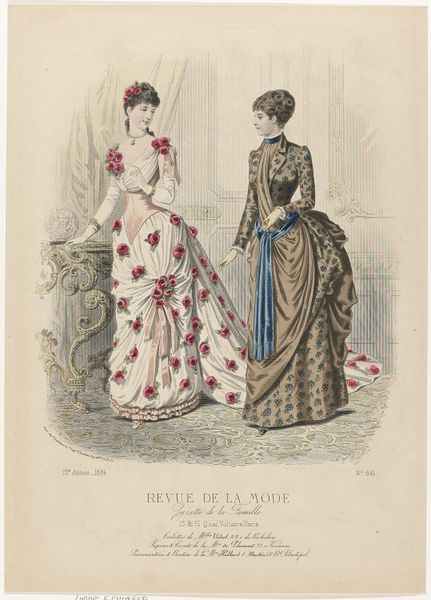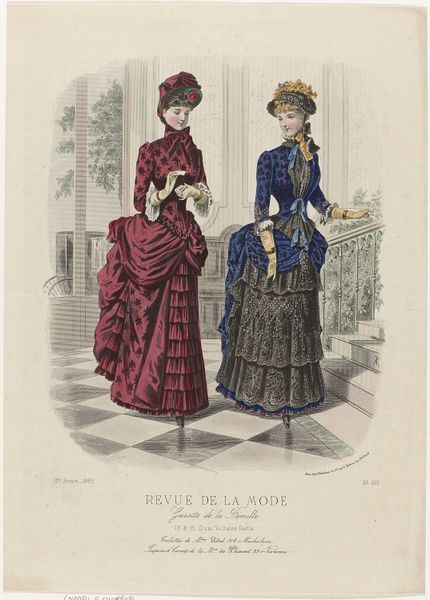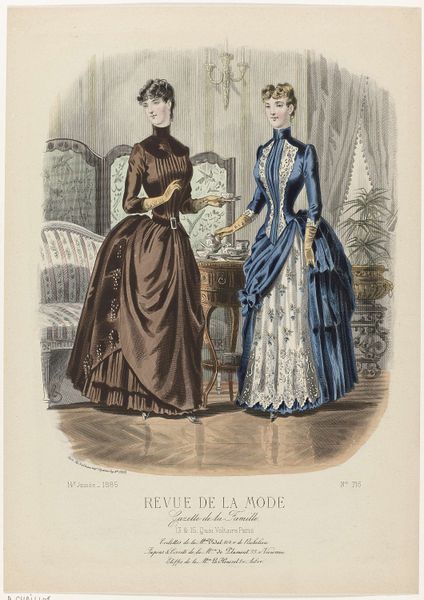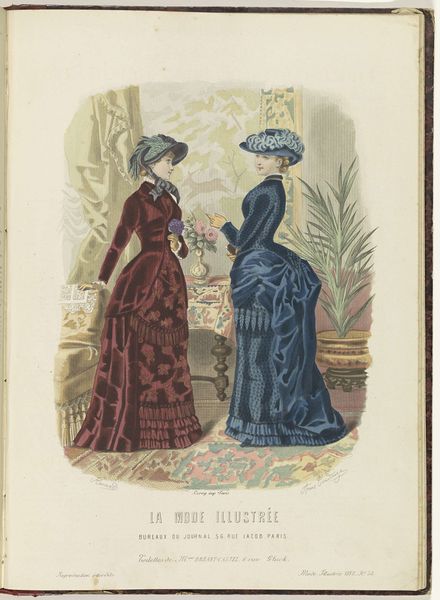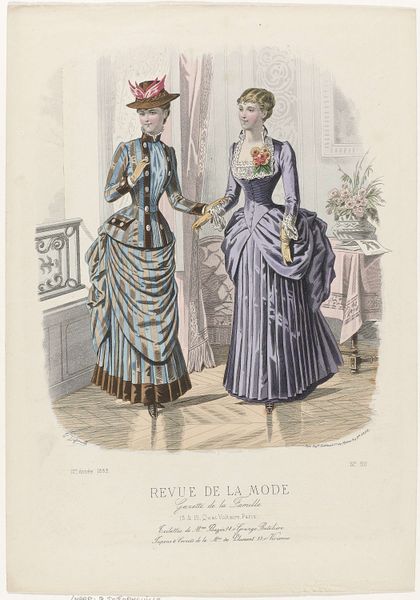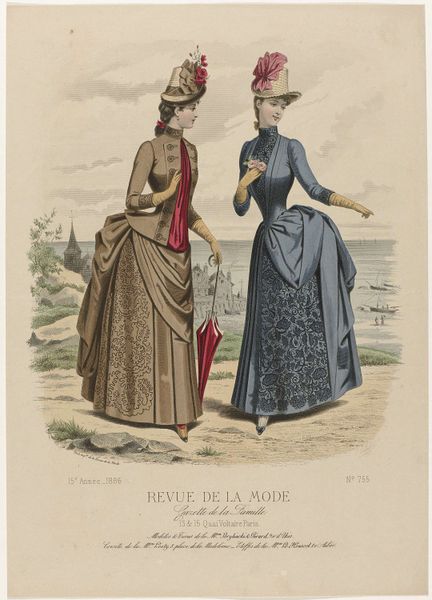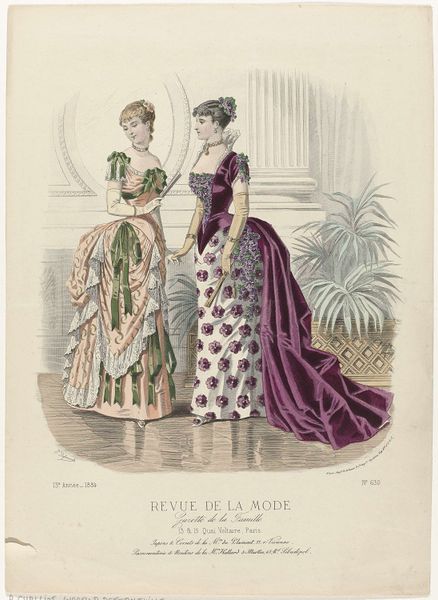
Revue de la Mode, Gazette de la Famille, dimanche 6 juin 1886, 15e Année, No. 753: Toilettes de la M.on Vidal Soeurs (...) 1886
0:00
0:00
Dimensions: height 375 mm, width 268 mm
Copyright: Rijks Museum: Open Domain
Editor: This is an 1886 lithograph titled "Revue de la Mode, Gazette de la Famille," and it seems to be a fashion plate. I am struck by the elegance of the women’s dresses and their very domestic activity of having tea. How would you interpret this work, beyond just fashion illustration? Curator: It is indeed more than a fashion plate. These images circulated widely and served as powerful tools in shaping not just taste in clothing, but also in reinforcing societal expectations for women. Consider the magazine title: *Gazette de la Famille.* These aren't merely dresses; they're markers of status, propriety, and domesticity. Editor: So the image is commenting on women’s roles, too? I suppose having them engaged in a domestic scene drives the point home. Curator: Exactly. These images presented an ideal—a vision of women confined to a specific sphere. What is more, the fact that such magazines became incredibly popular tells us so much about consumer culture at the time. It's about creating aspiration, feeding into the emerging middle class, but it's equally about defining limitations. Do you think that by producing aspirational objects the popular media could reinforce such strict standards of behaviour and representation? Editor: Definitely, I can see how this image can be read on multiple levels! The setting is carefully designed. It subtly confines their space and reiterates that role as the pinnacle of aspiration. It seems very meta to dissect an aspirational image so closely! Curator: Absolutely. By understanding these prints as more than just pretty pictures, we uncover the complex power dynamics embedded within everyday visual culture. The magazine cover thus becomes an artifact that documents cultural patterns, and is not only aesthetic pleasure. Editor: This has broadened my understanding of how visual culture, like this seemingly simple fashion plate, is tied to broader social structures. I learned that even an ordinary magazine image, produced to offer fashion news, can reveal how 19th-century social dynamics are perpetuated. Curator: And hopefully, by recognizing this now, we become more conscious and active readers of our own contemporary visual landscape.
Comments
No comments
Be the first to comment and join the conversation on the ultimate creative platform.
